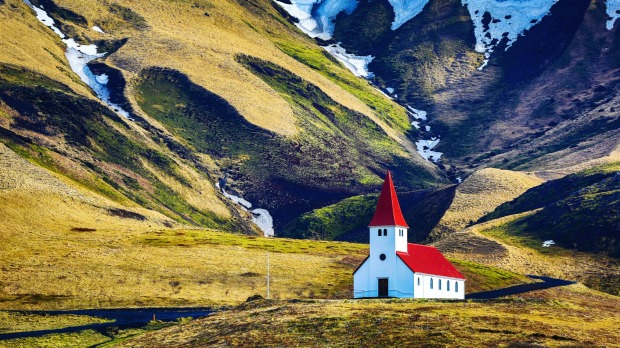
It can be hard, in our increasingly technology-obsessed, distraction-riddled world to just relax and enjoy the moment. But it definitely gets easier when you're on horseback, gently trotting through chilled-out countryside, where birds are the only ones tweeting and the scenery is so captivating you've long forgotten you've lost your Wi-Fi signal.
Iceland, it's fair to say, is one of the more memorable equestrian destinations. Here you can ride one of the planet's oldest and purest breed of horses to a backdrop of gobsmacking landscapes sculpted by thousands of years of glacial and volcanic activity.
Our faces warmed by the mild summer sun – it's 11C this morning and I'm wearing four layers of clothing – we're clip-clopping along the banks of Eyjafjordur, the longest of Iceland's copious, mountain-fringed fjords.
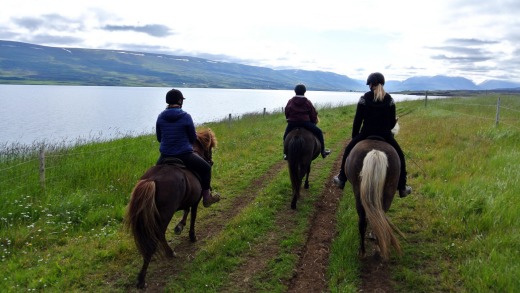
I'm drawn to the bleak, snow-sprinkled peaks looming across the broad span of calm, icy water. Hera, meanwhile, is more taken by the lush green grass edging the pebbly dirt trail beneath us. An adorably easy-going and easy-to-ride horse (even for a clumsy beginner like me), Hera is in her mid-teens, her muscular, dark brown coat and shaggy mane flecked with grey.
Like all horses in Iceland, including the four carrying the rest of our group (two tourists and two instructors), Hera is a descendant of the first group of equines brought here from Norway by the first Viking settlers in the late 9th century. With their stocky bodies, squat legs and thick manes, you might confuse Icelandic horses for ponies. But you shouldn't.
"Icelandic people get a bit offended when you call the horses ponies," says instructor Klara Olafursdottir as she strokes Vanda, her beautiful, blonde-maned and blonde-tailed light brown horse.
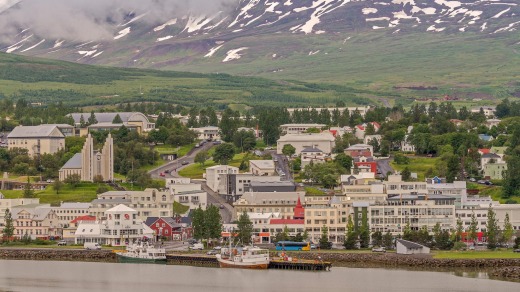
"They might be pony-sized, but they are so strong."
They have had to be to cope with the challenges of living in this remote North Atlantic island, whose rough terrain, harsh winters and tectonic unpredictability – including sporadic volcanic eruptions – have dented equine numbers over the centuries. So, too, have technological advancements – and the human appetite.
Our four-legged friends are no longer needed to till the land, or transport people around, and Icelanders are partial to horse meat (it's served here in steak, stew and minced form). Determined to preserve this unique creature, which comes in a gorgeous array of colours, the government offers subsidies to farmers who breed horses for leisure, while strict laws are in place to prevent horses from being imported, thus reducing the risk of herds being infected with foreign diseases. Once a horse leaves Iceland it can never return.
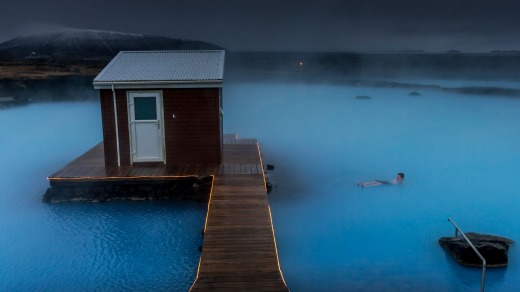
A few decades ago, it's believed there were just 12,000 horses in Iceland. Now it's about 80,000.
"Horse riding is actually the second most popular sport in Iceland after soccer," says Klara, whose family runs Skjaldarvik Riding Tours on the tranquil outskirts of Akureyri, an arty port city, 400 kilometres north of the capital, Reykjavik.
Because of its isolation from other breeds for more than 1000 years, the Icelandic horse has developed some intriguingly unique traits, notably its five gaits. After spending the first half-hour walking, trotting and cantering, our horses, one after the other, without so much of a "neigh" between them, quicken their pace and start to "tolt".
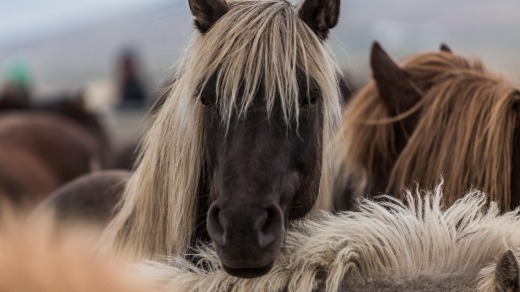
It's said the Icelandic horse evolved this extra, four-beat gait to deal with the island's craggy, lava-strewn landscapes and is so naturally ingrained that you'll even see foals performing it.
Some riders claim that so light and bounce-free is the tolt – in which the horse always has one foot on the ground – that you could carry a pint of beer and it wouldn't spill. I'm not convinced of this, but there's no doubt that it's an incredibly smooth, flowing and exhilarating rhythmic movement; one that allows you to take sharp photographs of the ravishing surrounds (if you don't mind taking one hand off the reins).
"When we bring new horses to our stables we make sure they can do the tolt, as that's what all the tourists want to try," says Klara, who, thankfully, doesn't worry us with the Icelandic horse's fifth gait — the "flying pace".
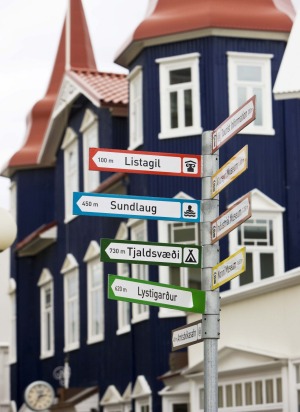
This is more common with racing horses, propelling them to speeds of up to 50 kilometres an hour. After completing our invigorating, undulating 90-minute loop, which has us shuffling past birch forests, wildflower-coated meadows and marshes alive with gulls and terns, we return our horses to the fjordside stables.
Handing us a bucket of grass pellets, Klara says we can reward our charges for their efforts. But, basking in my languid reverie, I have some kind of brain-freeze, because instead of offering Hera a cluster of pellets with my hand wide open, I shape it as if I'm preparing to stuff my sweets down my own mouth.
The next thing I know Hera has chomped down on a few pellets — and on one of my curled-up fingers.
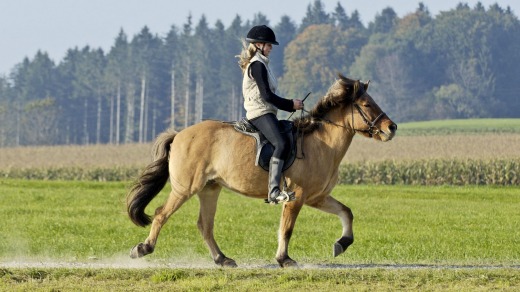
My first reaction is horror. The second is: "Arrggh. Let go!" Unlike the Icelandic people, Icelandic horses don't seem to understand English very well, and I swear that Hera increases the pressure of her bite.
Finally, well, probably three seconds later, she releases her grip, exhales gruffly through flared nostrils, shrugs an apology (possibly) and I pull my finger free. It's still in one piece, the tip throbbing and blue.
Before long, my dented digit is washed, daubed in antiseptic cream and bandaged, and I head back to Akureyri, reflecting on a morning that I won't forget in a hurry. One thing's for sure: I'd love to ride an Icelandic horse again — especially if it's under the midnight summer sun or the Aurora Borealis (northern lights). But I'll probably leave the feeding part to someone else.
www.visiticeland.com
www.skjaldarvik.is
If you're travelling to Iceland from Australia, you'll need to stop at least twice. British Airways has a return fare from Sydney to Keflavik (Iceland) via Singapore and London. Return flights from London to Keflavik with Iceland Air are priced from around $400.
Collette's eight-day Inspiring Iceland tour includes two nights in Akureyri, from which you're given the option of going horse-riding at Skjaldarvik or visiting the Myvatn Nature Baths (a geothermal hotspot 100 kilometres east of Akureyri). Collette has 30 Iceland tours in 2016, from May to October, priced from $3429 per person (based on double occupancy, excluding flights); see www.gocollette.com/en-au.
Iceland's epic glacial landscapes have been the backdrop for dramatic chase scenes in several movies, including A View to a Kill and Die Another Day, and you can channel your inner James Bond on heart-pumping snowmobile adventures. Speedy Ski-Doos traverse Vatnajokull, Europe's largest ice cap (which covers almost 10 per cent of Iceland's land mass). You can also explore this giant glacier on foot or in a four-wheel drive — then enjoy a bite to eat at mountain-top Joklasel, Iceland's highest restaurant.
See www.visitvatnajokull.is
Ever fancied diving or snorkelling in the "crack" between tectonic plates? Don a thick wetsuit and plunge into the postcard-perfect Thingvellir lake, in which the Silfra fissure was created by the diverging North American and Eurasian continental plates (they drift apart at a rate of about two centimetres a year). The lake's crystal-clear glacial water has visibility levels stretching more than 100 kilometres, and is home to marine life including trout, three-spined stickleback and Arctic charr.
See www.dive.is
Speleologists are in their element in Iceland, where incessant tectonic events have left the country riddled with caves and lava tubes. Of the explorable ones on Reykjavik's outskirts, Thrihnukagigur is the most talked-about (and expensive: $430). Billed as the only volcano on earth that you can explore from the inside, it's technically dormant, having not erupted in 4000 years. Visitors hike 45 minutes across a lava field to the crater, before being lowered 120 metres into the depths of Thrihnukagigur's eerie old magma chamber via an open elevator.
See www.insidethevolcano.com.
Isafjordur, a harbour town in Iceland's remote Westfjord region, is the country's self-proclaimed "kayaking capital", with a clutch of operators promising scenic, serene paddling tours. Fed by both spring and glacial water, Iceland's innumerable rivers and streams are a boon for adrenaline junkies. Within easy distance of Akureyri, the Skagafjordur valley is the hottest river rafting spot in Iceland's north, offering everything from family-friendly rapids to multi-day grade-four thrills. In the south, the gushing Hvita River, near the iconic Golden Circle touring circuit, is the place to go.
See www.isafjordur.is; www.arcticrafting.is
A haven for hardy hikers, Iceland is a rewarding destination for plucky cyclists, too (in summer at least). Peaceful country roads and off-road highland trails draw Lycra-clad souls, as does the busier Route 1, which is known as the Ring Road and loops 1330 kilometres round the island. Be warned: Iceland's other-worldly landscapes may be mesmerising, but its weather is notoriously unpredictable, with fierce winds, rain, sleet and snow possible at any time of year. You can pit stop – and bed down – in snug towns and villages along Route 1, including Hofn. Apparently, this is the best place to eat lobster in Iceland.
See www.fi.is